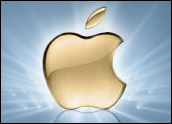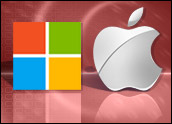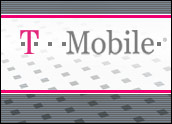
So far, the vast majority of press reports and blog posts coming out of the Consumer Electronics Show last week rave about Palm’s new Pre smartphone and webOS, the operating system that drives it. It’s a 3G phone that runs on Sprint’s network, has WiFi, GPS, 8 GB of memory, and all the standard stuff most expect from a smartphone these days.
Reports have generally glowed about the crisp multi-touch touchscreen, the nice Web browser, the slide-out QWERTY keyboard, and more importantly, the operating system behind the entire thing.
In a world where first impressions count, Palm scored big with its Pre and webOS. Still, the company itself has been rocked recently by the success of RIM’s BlackBerry and Apple’s iPhone, and it faces constant competition with Windows Mobile devices and the burgeoning Google Android platform — more phones running that software will likely hit the market in the year ahead.
“They’ve taken the time to develop the Pre and webOS — almost to the point of being detrimental to the company itself,” Chris Hazelton, research director of Mobile and Wireless for The 451 Group, told the E-Commerce Times.
“Palm has basically taken a beating for almost two years for not having a great new device model other than the Treo,” he added. “The Palm Pre is now their high-end device — it’s their answer to iPhone, and yet it’s their take on what a smartphone should be.”
Probably Not Too Little — But Is It Too Late?
The big questions resonate focus on whether it might be too late for Palm to return to glory. Or will the company simply tread water?
“Palm has challenges galore, and a single misstep could kill them,” Avi Greengart, research director of Wireless Devices for Current Analysis, told the E-Commerce Times.
“However, the Pre breaks ground in several areas and does appear to be good enough to build a business around. The Pre nicely leverages Palm’s brand strengths: Palm is synonymous with personal information management, and the Pre differentiates itself by managing information that’s stored all over the Web — a Web-era PDA, if you will,” Greengart explains.
In fact, webOS represents a key selling point that Palm will have to market to consumers: It’s designed to automatically consolidate information into your phone in a simple, integrated view. For example, Palm’s layered calendars let users view personal and work calendars at the same time, stacked in layers, or separately. Plus, Palm has managed to deliver cut-and-paste, a feature that has stymied iPhone fans since the device’s inception and a feature that Apple has largely ignored.
“The Pre and webOS focuses on the core of Palm — enterprise users who want to have a link between their work and their personal life … it’s more for prosumers,” Hazelton said.
What About Its Limitations?
If an elegant and thought-out operating system is a strength, what are its weaknesses? While the Pre plays music and videos, it comes nowhere near the top-to-bottom media integration delivered by Apple’s iTunes/iPhone model. If music launched the iPhone, might a fuzzy media message ground Palm?
“If you have a device that’s open to developers, they’ll push content and applications to the device,” Hazelton said, noting that Palm has left room for some gaps to be filled. Besides, the Pre will launch sometime in the first half of 2009, so Palm may very well be fine-tuning some features.
Of course, then there’s the idea of upgrades.
“There is no direct continuity between Palm’s existing products today and the Pre: Palm OS 5 applications will not work on the Pre, and the user interface looks nothing like the Treo. So Palm isn’t counting on upgrades from Treo users as much as upgrades from feature phones and other smartphone platforms,” Greengart said.
Lots of Room
Yes, Palm is late to the new smartphone world compared to the latest heavy hitters. “But the smartphone market is still pretty small — there’s lots of room because the total addressable market for smartphones is huge,” Hazelton said.
“Even though we have 75 to 80 percent penetration for mobile phones on the whole [in the U.S.], the thing that benefits the smartphone market is you have a replacement market where mobile phone users are migrating to smartphones — a lot of people will be looking at smartphones as their next device,” he explained. In addition, he noted, many consumers only own their new devices for 12 to 18 months before they upgrade to the latest and greatest.
Plus, Sprint is focused on building a smartphone customer base and will be able to show off a cool new device in the coming months.
So will the Palm Pre sell?
“It’ll be in demand,” Hazelton said.





















































Social Media
See all Social Media